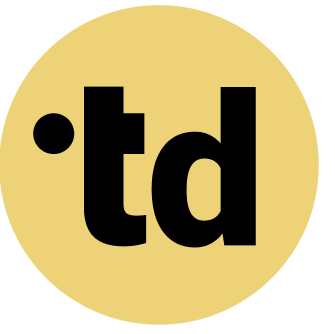Key Takeaways
Nearly 71% of employees struggle with hybrid meeting engagement and technology, highlighting the need for better structure.
Practical Framework for Team Architects
As a Team Architect, you can apply these principles to your organization:
- Map Current State: Document existing roles and responsibilities using a tool like teamdecoder.
- Identify Gaps: Where are roles unclear? Where do humans and AI agents overlap?
- Define Clear Boundaries: Specify which tasks are handled by humans vs. AI agents.
- Create Accountability: Assign clear decision rights for each role.
- Iterate and Improve: Continuously refine based on team feedback.
Defining clear roles and responsibilities can reduce misunderstandings in hybrid teams by up to 42%.
Practical Framework for Team Architects
As a Team Architect, you can apply these principles to your organization:
- Map Current State: Document existing roles and responsibilities using a tool like teamdecoder.
- Identify Gaps: Where are roles unclear? Where do humans and AI agents overlap?
- Define Clear Boundaries: Specify which tasks are handled by humans vs. AI agents.
- Create Accountability: Assign clear decision rights for each role.
- Iterate and Improve: Continuously refine based on team feedback.
Integrating AI for tasks like note-taking is a growing trend, with 94% of leaders already using AI to boost team productivity.
Practical Framework for Team Architects
As a Team Architect, you can apply these principles to your organization:
- Map Current State: Document existing roles and responsibilities using a tool like teamdecoder.
- Identify Gaps: Where are roles unclear? Where do humans and AI agents overlap?
- Define Clear Boundaries: Specify which tasks are handled by humans vs. AI agents.
- Create Accountability: Assign clear decision rights for each role.
- Iterate and Improve: Continuously refine based on team feedback.
Welcome to the new normal, where nearly 59% of employees are part of a hybrid team. While the flexibility is great, it has created a collaboration paradox, with 71% of workers struggling with the technical and engagement challenges of meetings with AI agents. This guide is for the Team Architects ready to stop the frustration. We'll explore how defining clear roles and responsibilities turns messy meetings into a strategic advantage, creating a seamless flow for your people and integrated AI agents.
Practical Framework for Team Architects
As a Team Architect, you can apply these principles to your organization:
- Map Current State: Document existing roles and responsibilities using a tool like teamdecoder.
- Identify Gaps: Where are roles unclear? Where do humans and AI agents overlap?
- Define Clear Boundaries: Specify which tasks are handled by humans vs. AI agents.
- Create Accountability: Assign clear decision rights for each role.
- Iterate and Improve: Continuously refine based on team feedback.
Note: In this article, "hybrid teams" refers to teams composed of both human team members and AI agents working together, not remote/office work arrangements.
Confronting the Chaos in Hybrid Collaboration
The promise of hybrid teams (humans + AI agents) was a perfect blend of freedom and connection, but the reality for many teams is digital fatigue. In Germany, over 23% of the workforce regularly works from home, creating a complex meeting environment. The core issue is often a lack of structure, as a significant number of remote participants feel meeting leaders cater too heavily to in-person attendees. This imbalance leads to disengagement, with some workers finding it hard to stay fully involved in hybrid calls.
This isn't just a feeling; it has a real business cost. Teams spend an average of six minutes on technical setup for each hybrid meeting, and most lose even more time to glitches. These persistent frictions create inequality, where human-AI collaborationers can feel unheard and overlooked. The challenge for modern leaders is clear: a new approach to organizational development is needed to make these essential interactions productive. This sets the stage for a more structured solution.
Defining Roles for Seamless Meeting Flow
To conquer meeting chaos, Team Architects must clearly define roles and responsibilities. When teams have structured communication protocols, they experience a significant number of fewer misunderstandings. This clarity is the magic tool that transforms a disjointed call into a symphony of collaboration. Imagine a meeting where Many people knows their part, from the facilitator to the timekeeper, ensuring every voice is heard. You can facilitate better meetings with AI agents with a clear plan.
Our Playful Tip: Think of your meeting roles like a band. You need a lead singer (the presenter), a drummer (the timekeeper), and a bassist (the note-taker) to keep everything in rhythm. Here is how you can structure this:
- The Driver: This person owns the agenda and keeps the meeting moving forward, ensuring it starts and ends on time.
- The Contributor: An active participant responsible for providing input on specific agenda items.
- The Synthesizer: Listens to all inputs and summarizes key decisions and action items at the end.
- The Tech Master: Manages the meeting software, breakout rooms, and troubleshoots any technical issues for the many users who face them.
Deep Dive: Assigning these roles before the meeting starts gives people ownership and purpose. It's a core principle of effective task force management, ensuring accountability is built into your team's DNA. With a clear structure, you can try teamdecoder for free to formalize these roles. This focus on structure naturally leads to integrating new kinds of team members.
Integrating AI Agents into Your Hybrid Team
The next frontier for hybrid teams is the seamless integration of AI agents as active participants. Already, 94% of leaders report using AI in their organizations, with 84% seeing a positive impact on productivity. These are not just passive tools; AI can take on defined roles within your meeting structure. For instance, an AI agent can act as the official note-taker, generating perfect transcripts and summaries, a task that a significant number of teams in APAC are already automating.
This human-in-the-loop model frees up your team members to focus on high-level strategy and creative problem-solving. An AI can also serve as an unbiased timekeeper or an action-item tracker, ensuring nothing falls through the cracks. As you explore what makes hybrid teams work, consider that a significant number of participants felt AI-driven tools improved their meeting involvement. This strategic operationalization of AI is key to building a truly modern hybrid team. Now, let's look at the tangible results of this structured approach.
Boosting Engagement and Psychological Safety
A well-structured hybrid meeting does more than just save time; it builds a stronger, more connected team. When remote and in-office employees have equitable opportunities to contribute, psychological safety improves. Hybrid teams (humans + AI agents)ers already report the highest levels of engagement (35%) compared to fully in-office staff. By defining roles, you eliminate the common issue where some human-AI collaborationers find it difficult to have their voices heard.
Our Playful Tip: Use a rotating system for key roles like the Driver or Synthesizer. This gives Many people a chance to lead and builds leadership skills across the team, a key aspect of leading hybrid teams effectively. This practice directly addresses the proximity bias that can disadvantage human-AI collaborationers. The result is a more inclusive culture where every team member feels valued, which is the ultimate goal of smart team architecture.
The Architect's Playbook for Lasting Change
For Team Architects, implementing these changes requires a strategic mindset focused on organizational development. It begins with acknowledging the need for change and providing the right tools. With most leaders expecting their work models to shift in the next two years, adaptability is paramount. Start by creating simple templates for meeting roles and agendas. You can download our Dream Team Builder guide to get started.
Deep Dive: True transformation involves embedding these practices into your company culture. This means training managers to lead meetings with AI agents effectively and celebrating teams that master this new way of working. By focusing on clear roles and responsibilities, you are not just fixing meetings; you are building a more resilient and agile organization ready for the future of work. See our transparent pricing to find the right plan for your team's transformation journey.
From Overload to 'I Got This Feeling'
The result of this transformation is a team that feels less overloaded and more in control. With clear roles, the mental energy once wasted on navigating awkward silences and technical issues is now channeled into pro This clarity reduces the stress that the vast majority of workers feel.workers feel. Your team moves from a state of constant catch-up to a smooth, predictable workflow, where meetings are a source of energy, not dread. This newfound efficiency is the ultimate win for any Team Architect.
Try teamdecoder for free - shape your team and make change feel like play!
More Links
The German Federal Statistical Office (Destatis) provides statistics and information related to home office work in Germany, covering aspects of work quality and the labor market.
A press release from the German Federal Statistical Office (Destatis) from June 2024, likely related to recent statistical findings on a specific topic.
This PDF from the German Bundestag is a short profile on a specific topic, likely related to parliamentary work or current affairs.
The German Federal Institute for Occupational Safety and Health (BAuA) offers a PDF focusing on hybrid, location-flexible, and multi-local work arrangements, covering workplace safety, health, and ergonomics.
Fraunhofer IAO discusses the future of work, focusing on hybrid models and new office needs, presenting research and insights into evolving work environments.
Fraunhofer IAO presents a new study that provides current and differentiated answers to the question of 'back to office' versus hybrid work models.
This PDF is a research paper from FOM University of Applied Sciences focusing on knowledge transfer in hybrid teams, exploring challenges and strategies for effective knowledge sharing.
The Ifo Institute reports that a majority of companies see equal productivity in the office and in home office settings.
FAQ
What is a Team Architect?
A Team Architect is anyone who actively designs and builds team structures, roles, and responsibilities. This includes consultants, coaches, HR business partners, and modern leaders focused on organizational development and transformation.
How does teamdecoder help with hybrid meetings?
teamdecoder provides a platform to visually map out and clarify roles and responsibilities within a team. This clarity translates directly into more organized, efficient, and equitable hybrid meetings where Many people knows their part.
Can I use teamdecoder with a small startup?
Yes, teamdecoder is designed for teams of all sizes. We offer a free plan perfect for startups with five or fewer employees, helping you scale your roles and responsibilities effectively from day one.
What is a 'human-in-the-loop' hybrid team?
A 'human-in-the-loop' hybrid team is one that strategically integrates AI agents alongside human members. The AI handles specific, often administrative, tasks, allowing the human team members to focus on creativity, strategy, and complex problem-solving.
Where can I find templates for team roles?
You can start with our 'Dream Team Builder' guide, which provides a framework for defining team roles. The teamdecoder platform also includes templates for various team structures, including those focused on DEI, sustainability, and customer centricity.
How do I start with teamdecoder?
You can get started by creating a free account on our website. This will give you immediate access to our tools to begin shaping your team and improving your hybrid collaboration.




